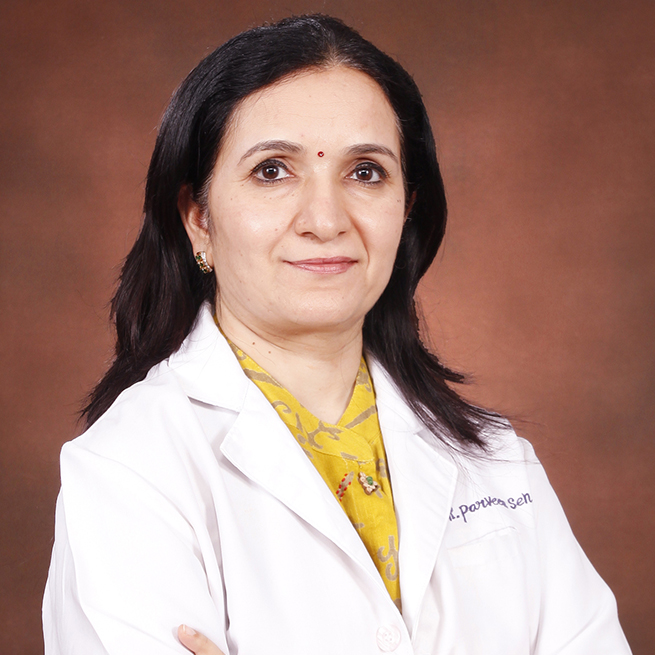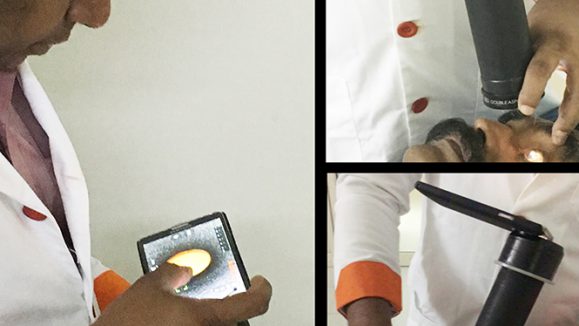Microincision vitrectomy surgery (MIVS) along with wide angle viewing systems allow surgeons to effectively manage ROP surgeries while at the same time reducing complication rates in infants’ eyes.
Retinopathy of prematurity (ROP) is one of the most common causes of visual loss in infancy and can lead to lifelong vision impairment and blindness. It primarily affects newborn babies who weigh 1,250 grams or less, or are born before 31 weeks of gestation.
Landmark trials such as CRYO-ROP and ETROP (Early Treatment Retinopathy of Prematurity) have provided deeper understanding of the natural history of the disease and established management guidelines. Currently, in developing countries like India, there are several important barriers to early treatment initiation in extremely premature infants with ROP. These include lack of awareness, lack of availability of specialized care, and low access to timely screening service in the immediate post-natal period.
An important complication of ROP is tractional retinal detachment (TRD) and once that occurs, surgical intervention in the form of vitrectomy is necessary. Vitrectomy relieves the traction, eliminates the scaffold for further fibro vascular growth and can remove the excessive levels of vascular endothelial growth factors (VEGF).
Micro-incision vitrectomy surgery (MIVS) has the advantage of minimal ocular surface disruption. It increases the surgeon’s ability to access between tight retinal folds and reduces surgical trauma, resulting in faster and better postoperative recovery. MIVS is used almost universally for most vitreoretinal procedures.
In a paper titled, Surgical outcomes of microincision vitrectomy surgery in eyes with retinal detachment secondary to retinopathy of prematurity in Indian population*, Dr. Parveen Sen and colleagues from the Department of Vitreoretinal Services, Shri Bhagwan Mahavir Vitreoretinal Services, Sankara Nethralaya, Chennai, reported anatomical outcomes of MIVS for Stage 4 and 5 ROP in Indian Infants.
Their findings were published in the June 2019 edition of the Indian Journal of Ophthalmology.
Between January 2012 and April 2015, Dr. Sen and colleagues reviewed medical records of 202 eyes of 129 premature children undergoing MIVS for Stage 4 or 5 ROP. The primary outcome measure was the proportion of eyes with anatomical success (defined as attached retina at the posterior pole at last follow-up). Furthermore, complications associated with MIVS were noted and an analysis of risk factors associated with poor anatomical outcomes was performed.
The infants were monitored for an average period of 32 weeks. At the end of follow-up, Dr. Sen and colleagues observed that 102 eyes (50.5%) had achieved anatomical success, including 74% eyes in Stage 4a and 4b, and 33% in Stage 5. Complications were documented in some infants, including intraoperative break formation in 19% of infants, postoperative vitreous hemorrhage in 28%, raised intraocular pressure in 12.7%, and cataract progression in 2.4% of infants.
Based on the study results, the authors concluded that “MIVS along with wide-angle viewing systems allow surgeons to effectively manage ROP surgeries, while at the same time reducing the complication rate in these eyes, which have complex pathoanatomy and otherwise grim prognosis”.
Dr. Sen provided a narrative of some of the key challenges faced today by surgeons in the management of advanced ROP. She explained that “ROP is largely a preventable cause of childhood blindness. If premature babies are screened within the first four weeks of birth and treated appropriately, surgical intervention can be prevented in most cases”.
“Once the child needs surgical intervention, a highly competent and experienced team comprising a pediatric retina specialist, pediatric anesthesiologist and a pediatrician is necessary to handle the baby during surgery and provide the essential postoperative care. Such a team very often may be available only in tertiary care centers,” she added.
According to Dr. Sen, surgery itself for ROP is a typical example where less is more. “Astute preoperative planning and precise execution are the keys to success,” she emphasized. For stage 4 ROP surgery, a vitrectomy through the pars plicata (since pars plana is not well developed in very small babies) with MIVS is the most widely accepted surgical approach at present.
In addition, the limbal approach, which avoids the pars plicata is the popular approach in cases of stage 5 ROP. “It allows adequate surgical maneuvering as well as decreases the rate of complications associated with this surgery. Regular follow-up of these babies is a must for adequate visual rehabilitation,” explained Dr. Sen.
On surgical outcomes, Dr. Sen clarified that “surgery itself is extremely demanding and unforgiving, needing high degree of precision and accuracy. In spite of best efforts, the success rate of surgery in the most advanced stage (stage 5) of ROP may be about 30 percent due to the complex nature of these retinal detachments”.
Furthermore, Dr. Sen gave important advice on the best ways to prevent ROP: “Prevention by timely screening and treatment is the best approach. To meet the challenge of preventing visual loss from ROP and screening all premature babies (about 3.5 million premature babies are born annually in India), ophthalmologists, neonatologists, gynecologists and government institutions must take collaborative efforts.”
* Sen P, Bhende P, Sharma T, et al. Surgical outcomes of microincision vitrectomy surgery in eyes with retinal detachment secondary to retinopathy of prematurity in Indian population. Indian J Ophthalmol. 2019;67(6):889-895.




